Inground Swimming Pool Guide
In-depth guide on the cost, pros and cons, plus see which type of inground pool is best for your backyard.
January 16th, 2025
January 16th, 2025

We know swimming pools better than anyone. With over 30+ years of combined experience in pool building, we are here to help. From finding the perfect pool builder to choosing the right equipment, you’re in the right place.
Today, I’ll be diving in on the types of inground swimming pools, how to maintain them, the pros and cons, and more to help see which type of pool is best for your backyard, and more importantly, your budget. Make sure to check the end for some secret tips on how to save big on an inground pool. So, let’s dive in!
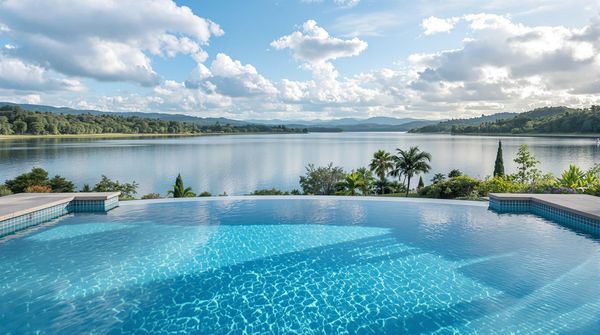
Inground pools come in a variety of styles and materials, each offering unique benefits, costs, and maintenance requirements. Choosing the right type depends on your budget, design preferences, and how you plan to use your pool. Let’s take a closer look at the most common types of inground swimming pools:
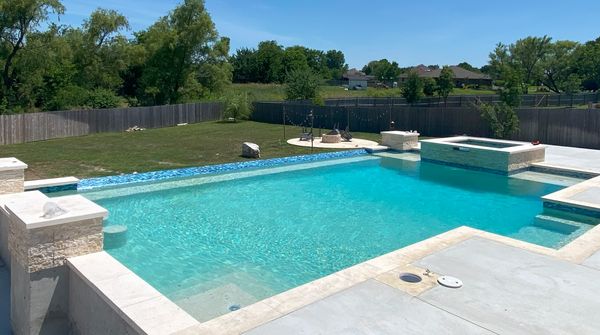
Gunite pools are a popular choice thanks to their durability and flexibility in design. Constructed using a rebar framework sprayed with a mixture of concrete and sand, these pools are highly customizable. Whether you want intricate shapes, built-in waterfalls, or custom tiling, gunite pools make it possible.
Advantages:
Long-lasting with proper care.
Fully customizable in shape, size, and features.
High-end aesthetic that blends beautifully with landscaping.
Considerations:
Longer installation time compared to other materials.
Requires periodic resurfacing every 10–15 years.
Higher initial cost.
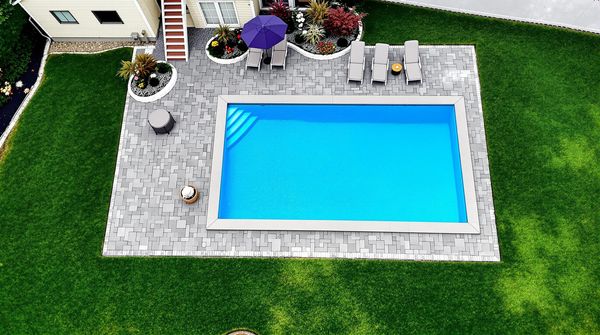
Fiberglass pools are pre-formed shells manufactured in a factory and delivered to your site for quick installation. Their smooth, non-porous surface resists algae buildup, making them easier to maintain than concrete options.
Advantages:
Fast installation, often completed in a week.
Low maintenance due to the smooth surface.
Comfortable on swimmers’ feet and skin.
Considerations:
Limited customization, as they are pre-made in specific shapes and sizes.
Transportation of the shell may be challenging in areas with restricted access.
Higher upfront cost compared to vinyl but typically lower than gunite.
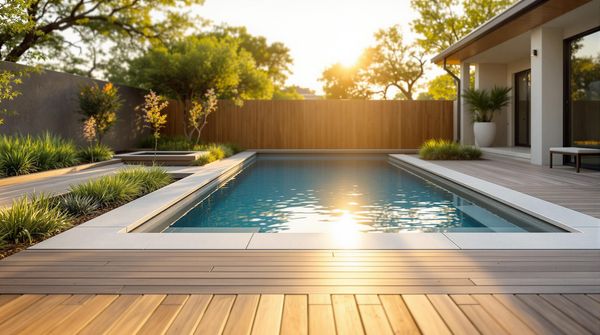
Concrete pools are the gold standard for durability and customization. Like gunite, they allow for endless design possibilities but use a poured concrete base instead of sprayed material.
Advantages:
Extremely durable and versatile.
Suitable for large, complex designs.
Can include features like vanishing edges or custom depths.
Considerations:
Lengthy installation process, often taking several months.
High cost due to the labor-intensive construction.
Requires ongoing maintenance and resurfacing over time.
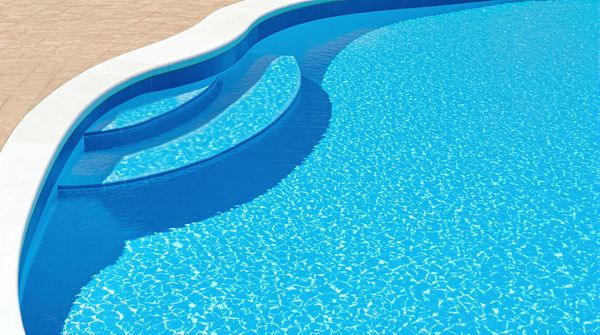
Vinyl-lined pools are a more affordable inground option. These pools use a flexible liner stretched over a prepared frame, making them a budget-friendly alternative to gunite or fiberglass.
Advantages:
Lower initial cost than concrete or fiberglass.
Smooth surface that is gentle on swimmers.
Customizable shapes and sizes within certain limits.
Considerations:
The vinyl liner requires replacement every 5–9 years.
Prone to punctures or tears from sharp objects.
Less durable overall compared to other materials.

Container pools are one of the newest trends in inground pool construction. These pools are made from repurposed shipping containers, offering a modern, eco-friendly option that installs quickly and looks sleek.
Advantages:
Fast installation, often completed in a matter of days.
Sustainable option using recycled materials.
Unique, contemporary design that stands out.
Considerations:
Limited customization due to the fixed dimensions of the container.
Requires additional insulation in colder climates.
May not blend as seamlessly with traditional landscaping.
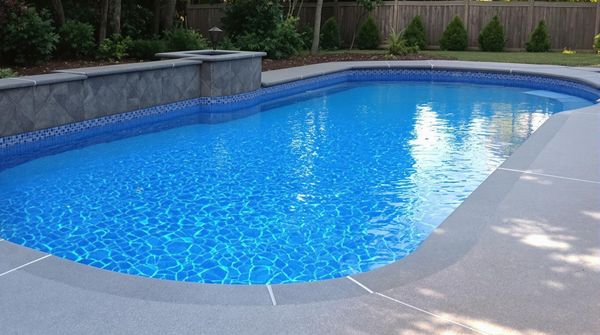
The cost of an inground pool can vary widely based on factors like materials, size, design complexity, and additional features. On average, homeowners can expect to spend between $35,000 and $100,000, but the final price depends heavily on customization and location.
Material: Concrete and gunite pools tend to be the most expensive, while vinyl and fiberglass offer more budget-friendly options.
Size and Depth: Larger and deeper pools require more materials and labor, increasing costs.
Features and Add-Ons: Custom lighting, water features, decking, and automation can significantly raise the price.
Installation and Labor: Regional labor costs and the complexity of excavation also play a role.
While the upfront investment is substantial, an inground pool adds long-term value and enjoyment to your property, often making it worth the cost.
Financing your dream inground pool is more accessible with pool loans, allowing homeowners to spread costs over manageable monthly payments. These loans can cover the pool itself and related expenses like landscaping and features, making it easier to turn your backyard vision into reality. Options include unsecured personal loans for smaller projects, secured loans or home equity lines of credit (HELOCs) for lower interest rates and larger budgets, or specialized pool loans tailored for swimming pool installations.
When choosing a loan, consider your budget, loan terms, and interest rates, and factor in additional costs like permits and maintenance. Compare lenders, check your credit score, and plan for long-term affordability to ensure your financing aligns with your financial goals.
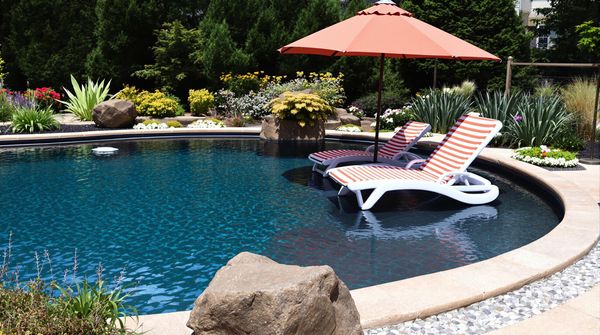
A standout feature of inground pools is their ability to be fully customized to your style and needs. From pool shapes to cutting-edge technology, the options are nearly endless. These customizations not only enhance the aesthetic but also improve the functionality and enjoyment of your pool.
Inground pools offer unparalleled flexibility in design. Whether you prefer the clean lines of a rectangular pool, the natural curves of a freeform design, or the functionality of a lap pool, the choice is yours. Shape can also influence the overall feel of your backyard—freeform pools lend themselves to a more organic, tropical look, while geometric designs create a sleek, modern vibe.
Enhance your pool with features that add excitement and elevate the experience:
Waterfalls and Fountains: Create a relaxing ambiance with the soothing sound of running water.
Bubblers: Ideal for shallow areas like tanning ledges, bubblers add playful visual interest.
LED Lighting: Change colors to match the mood, whether it’s a calming evening swim or a festive pool party.

Installing an inground pool is an exciting yet complex process that transforms your backyard into a personal retreat. The journey from design to the first dive can take weeks or even months, depending on the pool type and features. Here’s a general overview of what the process involves:
Design and Planning: Work with a pool contractor to design the layout, select materials, and incorporate features like waterfalls or tanning ledges. This stage also includes obtaining permits.
Excavation: The site is prepared by digging the pool’s shape and ensuring the ground is level.
Structural Installation: Depending on the pool type, this involves installing rebar for gunite, placing a fiberglass shell, or setting up vinyl liners.
Plumbing and Electrical Work: Pipes, filters, pumps, and lighting are installed to bring the pool to life.
Finishing Touches: Add decking, coping, and landscaping to complete the look.
Filling and Testing: Once finished, the pool is filled with water, and systems are tested to ensure everything is functioning properly.
Though time-consuming, the process is worth it for a custom pool built to last decades.

An inground pool is more than just a place to swim; it’s an investment in your lifestyle and property. Here are some key benefits:
Aesthetic Appeal: Inground pools blend seamlessly into landscaping, creating a luxurious and polished look.
Customization: Choose from various shapes, sizes, and features to suit your needs and design preferences.
Increased Property Value: In areas where pools are desirable, an inground pool can boost your home’s resale value.
Durability: With proper care, inground pools last for decades, providing long-term enjoyment.
Versatility: Ideal for everything from family gatherings to exercise routines, inground pools cater to a variety of uses.
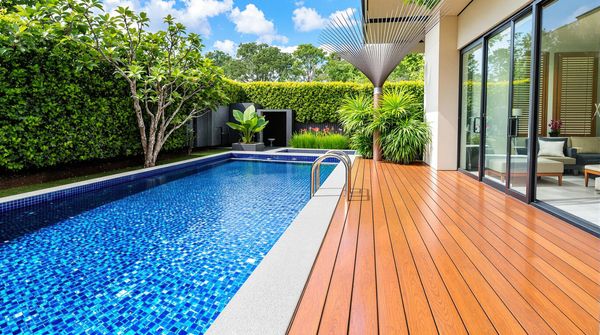
While inground pools have plenty of advantages, they’re not without drawbacks. Some of the most common concerns include:
High Initial Cost: Building an inground pool is a significant investment, often starting at $35,000 and increasing with customization.
Long Installation Timeline: It can take weeks or months to complete, which may be inconvenient for homeowners seeking a quick solution.
Maintenance Requirements: Regular cleaning, chemical balancing, and repairs are essential to keep the pool in good condition.
Permanent Commitment: Unlike above-ground pools, inground pools are not easily removed or relocated.
Seasonal Limitations: In colder climates, inground pools often require winterizing and can’t be used year-round without a heating system.
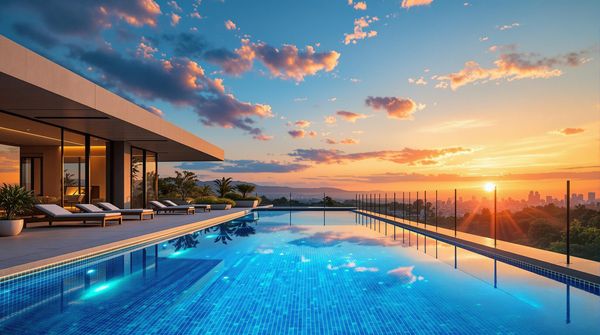
Choosing the right inground pool involves comparing it not only to above-ground options but also to other inground designs like container and precast pools. Let’s break it down:
The most noticeable difference is aesthetic. Inground pools integrate with the landscape, offering a polished look, while above-ground pools sit atop the ground, often appearing less refined. In terms of durability, inground pools are built to last decades, while above-ground pools typically have a lifespan of 7–15 years. However, above-ground pools win on affordability and ease of installation, making them ideal for temporary solutions or smaller budgets.
Read our guide on inground vs above-ground pools >
Traditional inground pools (e.g., concrete, fiberglass, or vinyl) are fully customizable, allowing for unique shapes and sizes. Container pools, made from repurposed shipping containers, offer a more modern, eco-friendly option. While container pools are quicker to install and often cost less, their dimensions are fixed, which limits design flexibility. Traditional pools are better suited for homeowners seeking a bespoke design.
Traditional pools are built on-site, allowing for extensive customization and integration with the surrounding landscape. However, this process is time-intensive and costly. Precast pools, on the other hand, are manufactured offsite and delivered in one piece. Installation is quicker and often more affordable, but customization options are more limited. Precast pools are a middle ground for those who want the durability of an inground pool without the lengthy installation process.
The swimming pool industry is evolving with innovative designs, smart technology, and eco-friendly options that enhance both aesthetics and functionality. Here are some of the most popular trends shaping modern pools:
Infinity Edges: These luxurious designs create the illusion of water extending seamlessly into the horizon, perfect for properties with scenic views.
Smart Pool Technology: Automation systems allow you to control lighting, temperature, and cleaning schedules from your smartphone, making pool management effortless.
Sustainable Features: Solar heating, energy-efficient pumps, and natural pools with plants for filtration are gaining popularity among environmentally conscious homeowners.
Multipurpose Pools: Pools now include features like swim-up bars, integrated spas, and shallow lounging areas, blending relaxation with recreation.
Minimalist Designs: Clean lines, geometric shapes, and neutral tones give pools a modern, sleek appearance that complements contemporary homes.
These trends cater to both functionality and luxury, offering endless possibilities for creating a unique swimming experience.
Pool safety is a critical consideration for any homeowner, particularly for families with children or pets. A few essential safety measures can significantly reduce risks:
Fencing and Barriers: Many local laws require pools to have fences or enclosures with self-latching gates to prevent unauthorized access.
Covers and Nets: Safety covers and nets provide an extra layer of protection when the pool is not in use.
Alarms: Pool alarms can detect movement in the water or when gates are opened, alerting you to potential dangers.
Non-Slip Surfaces: Use materials around the pool that minimize the risk of slipping.
Lifeguard Equipment: Keeping life rings, poles, and first aid kits nearby ensures you’re prepared for emergencies.
Investing in these safety features not only protects your loved ones but also ensures compliance with local regulations.
Before installing a pool, it’s important to understand and follow all relevant regulations to avoid delays or penalties. Here’s what to consider:
Local governments often have specific requirements for pool construction. These laws typically address:
Permits: Most areas require a building permit before construction begins. This ensures the pool meets safety and zoning requirements.
Fencing: Safety barriers are often mandatory to prevent accidents.
Utility Checks: You’ll need to confirm the location of underground utilities before excavation.
Failing to comply with these regulations can result in fines or forced removal of the pool, so consult your local building department for guidance.
If you live in a community with a homeowners association, additional rules may apply. These could include restrictions on pool type, size, or placement to maintain neighborhood aesthetics. Always review your HOA guidelines before starting your project to avoid conflicts.
Maintaining an inground pool ensures its longevity, keeps it safe for use, and maintains its aesthetic appeal. While inground pools require more upkeep than their above-ground counterparts, a regular maintenance routine can simplify the process.
Water Chemistry: Test and balance pH, alkalinity, and chlorine levels weekly to prevent algae growth and ensure swimmer safety.
Cleaning: Skim debris from the surface daily, vacuum the pool floor, and brush walls to avoid buildup.
Filter and Pump Maintenance: Clean or replace filters regularly to keep the water circulation system functioning efficiently.
Winterizing: In colder climates, properly closing your pool for the winter prevents damage from freezing temperatures.
Equipment Checks: Inspect pumps, heaters, and other equipment periodically for signs of wear or malfunction.
Routine maintenance not only enhances the swimming experience but also protects your investment, ensuring your pool remains a valuable addition to your property for years to come.
Modern pools are equipped with technology that makes maintenance easier and improves energy efficiency:
Heating and Cooling Systems: Enjoy your pool year-round with a heater for cooler months or a chiller to beat the summer heat.
Automation and Smart Technology: Control everything from lighting to water temperature with your smartphone or a home automation system.
Your pool’s surrounding area is just as important as the pool itself. Decking and coping materials help define the space and complement your landscaping. Common options include:
Concrete: Durable and budget-friendly, concrete can be stamped or stained for added style.
Pavers: A versatile option available in various colors and textures.
Stone: Natural stone provides a luxurious, high-end look.
Wood: Great for a rustic or modern aesthetic, though it requires regular maintenance.
Lighting can transform your pool from a daytime retreat to a nighttime paradise. Consider options like:
LED Lighting: Energy-efficient and customizable with a range of colors.
Solar Lights: Environmentally friendly and ideal for pathways or accent lighting.
To maximize your pool’s usability, consider investing in heating or cooling systems. Gas heaters, electric heat pumps, and solar heating are popular options for warming the water, while pool chillers help cool it during hot summer months.
Take your pool into the future with automation systems that let you control your pool’s features remotely. From adjusting the temperature to scheduling cleanings, smart pool technology offers convenience and peace of mind.
Customizing your inground pool is all about creating a space that reflects your lifestyle and enhances your outdoor living experience. Whether you prioritize luxury features, energy-efficient equipment, or modern technology, the right choices will ensure your pool is as functional as it is beautiful.